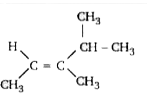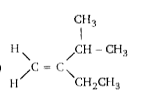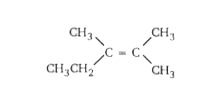The given diagram is highly diagrammatic representation of mammalian heart. In this diagram
(##EVR_ANM_ICSE_BIO_X_C07_E01_021_Q01.png" width="80%">
Name the valves that guard openings in the heart.
To answer the question regarding the valves that guard openings in the mammalian heart, we can follow these steps:
1. Understand the Structure of the Heart: The mammalian heart consists of four chambers: the right atrium (auricle), right ventricle, left atrium (auricle), and left ventricle. There are valves that regulate blood flow between these chambers and out to the arteries.
2. Identify the Valves:
- Tricuspid Valve: This valve is located between the right atrium and right ventricle. It prevents the backflow of blood from the right ventricle to the right atrium when the ventricle contracts.
- Bicuspid Valve (Mitral Valve): This valve is located between the left atrium and left ventricle. It prevents the backflow of blood from the left ventricle to the left atrium when the ventricle contracts.
- Pulmonary Valve: This valve is located at the opening of the pulmonary artery from the right ventricle. It prevents backflow of blood into the right ventricle after it has been pumped into the pulmonary artery.
- Aortic Valve: This valve is located at the opening of the aorta from the left ventricle. It prevents backflow of blood into the left ventricle after it has been pumped into the aorta.
3. List the Valves: Based on the above identification, the valves that guard the openings in the heart are:
- Tricuspid Valve
- Bicuspid Valve (Mitral Valve)
- Pulmonary Valve
- Aortic Valve
Final Answer:
The valves that guard openings in the mammalian heart are:
1. Tricuspid Valve
2. Bicuspid Valve (Mitral Valve)
3. Pulmonary Valve
4. Aortic Valve
- Tricuspid Valve: This valve is located between the right atrium and right ventricle. It prevents the backflow of blood from the right ventricle to the right atrium when the ventricle contracts.
- Bicuspid Valve (Mitral Valve): This valve is located between the left atrium and left ventricle. It prevents the backflow of blood from the left ventricle to the left atrium when the ventricle contracts.
- Pulmonary Valve: This valve is located at the opening of the pulmonary artery from the right ventricle. It prevents backflow of blood into the right ventricle after it has been pumped into the pulmonary artery.
- Aortic Valve: This valve is located at the opening of the aorta from the left ventricle. It prevents backflow of blood into the left ventricle after it has been pumped into the aorta.
- Tricuspid Valve
- Bicuspid Valve (Mitral Valve)
- Pulmonary Valve
- Aortic Valve
The valves that guard openings in the mammalian heart are:
1. Tricuspid Valve
2. Bicuspid Valve (Mitral Valve)
3. Pulmonary Valve
4. Aortic Valve
Topper's Solved these Questions
Similar Questions
The given diagram is highly diagrammatic representation of mammalian heart. In this diagram
(##EVR_ANM_ICSE_BIO_X_C07_E01_020_Q01.png" width="80%">
What do the arrows indicate ?
View SolutionThe given diagram is highly diagrammatic representation of mammalian heart. In this diagram
(##EVR_ANM_ICSE_BIO_X_C07_E01_022_Q01.png" width="80%">
From where do the parts numbered 1- 6 receive blood ?
View Solution
Knowledge Check
The given image represents:
(##OSW_GRU_MCQ_ISC_XII_SM1_BIO_C05_E01_070_Q01.png" width="80%">Achromosomes assorting independently.Bsegregation of incompletely linked genes.Ccrossing over between factors carried on the chromosomes.DBoth (a) and (c)Match the items of column A to those given in column B.
(##OSW_GRU_MCQ_ISC_XII_SM1_CHE_C01_E01_039_Q01.png" width="80%">A1-(q), 2-(p), 3-(t), 4-(r), 5-(s), 6-(v), 7-(u)B1-(p), 2-(q), 3-(s), 4-(r), 5-(t), 6-(u), 7-(v)C1-(v), 2-(s), 3-(u), 4-(p), 5-(r), 6-(q), 7-(t)D1-(r), 2-(u), 3-(t), 4-(q), 5-(v), 6-(s), 7-(p)What,is the major product ofthe following reaction?
(##BLJ_MSC_OBJ_CHE_JEE_C05B_E01_057_Q01.png" width="80%">A B
B C
C D
D
The given diagram is highly diagrammatic representation of mammalian heart. In this diagram
Name the parts marked 1-12.

View SolutionFind the equivalent resistance between P and Q.
(##ARH_NEET_PHY_OBJ_V02_C03_S01_032_Q01.png" width="80%">
View SolutionMatch the properties and uses of alloys in List 1 with the appropriate answer from List 2.
(##EVRBLKICSECHEX_C07E06054_Q01.png width=80%>
View SolutionIn the given figure. AB is the diameter of the circle with centre O.
(##SELRKBICSEMATX_C17E04012_Q01.png width=80%><br>If angle ADC = 32 ^(@) , find angle BOC.
View SolutionCalculate the angles x,y and z if
x3=y4=z5
(##SEL_RKB_ICSE_MAT_X_C17_E02_042_Q01.png" width="80%">
View Solution
